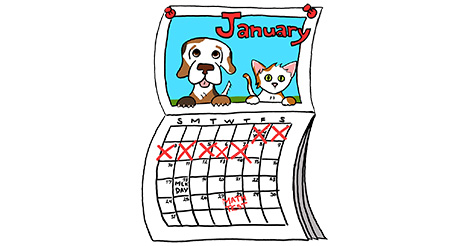Imagine falling asleep one evening and waking up the following day... to find yourself some 10 to 13 days in the future! Over the past few centuries, people all over the world witnessed this phenomenon at one point or another as countries made the switch from the Julian calendar to the Gregorian calendar, currently the most widely known and extensively used calendar in the world.
The Gregorian calendar derives its basic 365-day, 12-month year (and the notion of a leap year) from the Julian calendar, which was created by the Romans. The Catholic Church commissioned the Gregorian calendar (named after Pope Gregory XIII) in the 16th century to establish a standard calendar that was a closer approximation of the tropical year—and therefore, aligned more consistently with astronomical occurrences like seasons and equinoxes. The average year in the Julian calendar is 365.25 days, while the average year in the Gregorian calendar is 365.2425 days. This may seem like a minute difference, but trust us, it added up—calculation inaccuracies in the Julian calendar resulted in an extra day every 134 years! In contrast, the Gregorian calendar is off by about 1 day every 3236 years (source).
Understandably, when implementing the Gregorian calendar, avoiding further deviation from the tropical year was key. To fix this drift, a 10-day correction was deemed necessary. France, Portugal, Italy, Poland, & Spain were the first countries to make the switch in 1582. Citizens of these countries went to bed on the evening of Thursday, October 4, 1582 and woke up the morning of Friday, October 15, 1582.
As time passed, the number of days necessary to make the transition increased. By the time Great Britain and the British Empire at large switched to the Gregorian calendar in 1752, an 11-day shift was necessary—Wednesday, September 2nd, 1752 was followed by Thursday, September 14th, 1752. The Gregorian calendar’s worldwide spread continued as late as 1949, when it was formally adopted by the People’s Republic of China.
P.S. Did you know that 2016 is a leap year? We’ll expand on that concept more when February 29, 2016 rolls around… stay tuned!

 877-601-6284
877-601-6284 877-601-6284
877-601-6284

















